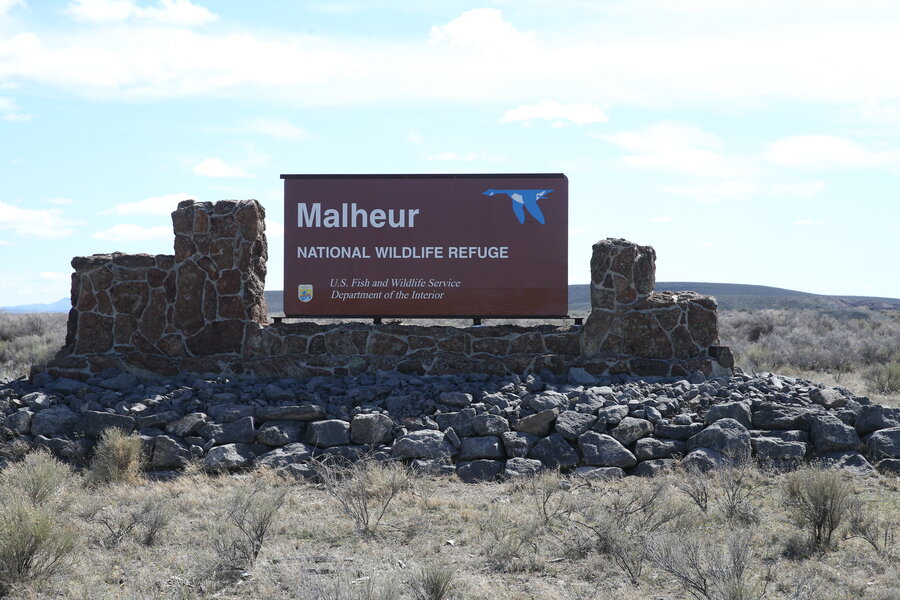Why Malheur Wildlife Refuge is seeing green after the siege
Loading...
The armed occupation of the Malheur National Wildlife Refuge which ended in February has left an unexpected legacy to the park, one that appears to be in conflict with the occupiers' original intent.
Since the siege on the refuge ended in early February, the park has seen a surge of financial support.
While disgruntled farmer Ammon Bundy initiated the takeover with his armed supporters to protest federal ownership of land – such as Malheur in Harney County, Ore. – his 41-day occupation of the refuge appears to have worked against his agenda: Malheur has witnessed an outpouring of donations and visitors. Neither the park nor the occupiers could have anticipated the kind of interest the occupation would eventually spark.
“It was a curse for the refuge and the [Friends of Malheur National Wildlife Refuge] group, and it was kind of dark days,” Gary Ivey, president of the independent nonprofit Friends of Malheur National Wildlife Refuge, told Oregon’s Bend Bulletin. The organization has raised over $75,000 in new memberships and donations since January. “It’s also a blessing because there’s been a lot more broad support and [the refuge is] more well known now.”
Malheur held its annual Harney County Migratory Bird Festival earlier this month and it was an unprecedented success. According to the festival’s website, “Tours filled up faster than we could keep up” and many of the events sold out before the three-day festival.
“This has definitely been way more popular than past years and probably the busiest year we’ve had,” Chrissi Carpentier, a coordinator with the Harney County Chamber of Commerce, told the Bend Bulletin.
“The name was out there, and it did help people realize that there’s a beautiful refuge here,” Chelsea Harrison, director of the Harney County Chamber of Commerce, told Oregon Public Broadcasting.
The occupation even started bringing in funds before the Bundys left the premises. Soon after the occupiers took over Malheur, a pair of Oregon brothers started an online fundraiser for the refuge and other related interests.
“For each day the unlawful occupation continues, the pledged funding for these groups will increase. It is our hope that the nonnative occupiers will see the futility of their wrongful takeover and peacefully go home!” brother Zach and Jake Klonoski pleaded on the site gohomemalheur.com. The Klonoski brothers’ mother is US District Court Judge Ann Aiken, whose resentencing of ranchers Dwight and Steven Hammond became the Bundys’ rallying cry.
“The Klonoskis’ fundraiser poses a direct challenge to occupational organizers: the longer they stay the more money is raised for the Paiute Tribe; Friends of the Malheur National Wildlife Refuge; Americans for Responsible Solutions, a gun control organization founded by former Arizona Rep. Gabby Giffords; and the Southern Poverty Law Center, which monitors extremist groups in the US,” the Monitor’s Molly Jackson wrote in January.
“We need the final donated amount to be big, so that history records that the Bundys raised a ton of money against their own cause through their futile occupation,” write the Klonoski brothers. And when the occupation did end after 41 days, $135,647 was pledged to the GoHome campaign. In other words, each day the Bundys prolonged their occupation, $3,154 was raised for Malheur.
But it has not been all good financial news since the occupation ended over two months ago. According to the US Fish and Wildlife Service, the occupiers left the refuge with $1.7 million in damages. But while it will take some time for Malheur to recover, the occupation appears to have reinvigorated the refuge’s conservation motives.
“Bundy’s stated goal was to turn the refuge over to local ranchers, loggers and miners,” writes Triple Pundit’s Tina Casey. “But instead he set off a surge of public support for national parks in general and the Malheur refuge in particular.”






